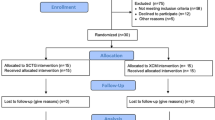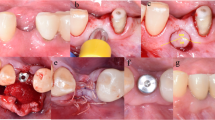Abstract
The aim of this histopathologic study was to assess and compare the subcutaneous connective tissue reaction to three different maxillofacial silicone elastomers (Cosmesil, Multisil, Episil). The test materials were directly inserted subcutaneously into the dorsal subcutaneous tissue of Wistar albino rats. Histopathological examinations were done at 7, 30, and 90 days after the implantation procedure. The presence of inflammation, presence of inflammatory giant cells, and the thickness of fibrous connective tissue adjacent to each inserted sample were recorded. Data was evaluated by analysis of variance, Wilcoxon signed ranks test and Kruskal Wallis test. Cosmesil, Multisil and Episil silicone elastomers at 7 days elicited a severe inflammatory reaction. However, these reactions decreased by the 30 and 90 days. All silicone elastomers elicited a moderate inflammatory reaction at 30 and 90 days. There were no significant differences in tissue reaction between the materials at 7, 30, and 90 days (P > 0.05). All the maxillofacial silicone elastomers evaluated can not be assigned a favorable biocompatibility level based on this study’s histologic findings.



Similar content being viewed by others
References
Kiat-Amnuay S, Gettleman L, Khan Z, Goldsmith LJ. Effect of adhesive retention of maxillofacial prostheses. Part 2: Time and reapplication effects. J Prosthet Dent. 2001;85:438–41.
Craig RG, Koran A, Yu R. Elastomers for maxillofacial applications. Biomaterials. 1980;1:112–7.
Lontz JF. State-of-the-art materials used for maxillofacial prosthetic reconstruction. Dent Clin North Am. 1990;34:307–25.
Lewis DH, Castleberry DJ. An assessment of recent advances in external maxillofacial materials. J Prosthet Dent. 1980;43:426–32.
Andres CJ, Haug SP, Munoz CA, Bernal G. Effects of environmental factors on maxillofacial elastomers: part I—Literature review. J Prosthet Dent. 1992;68:327–30.
Bell WT, Chalian VA, Moore BK. Polydimethyl siloxane materials in maxillofacial prosthetics: evaluation and comparison of physical properties. J Prosthet Dent. 1985;54:404–10.
Polyzois GL, Hensten-Pettersen A, Kullmann A. An assessment of the physical properties and biocompatibility of three silicone elastomers. J Prosthet Dent. 1994;71:500–4.
Polyzois GL, Hensten-Pettersen A, Kullmann A. Effects of RTC-silicone maxillofacial prosthetic elastomers on cell cultures. J Prosthet Dent. 1994;71:505–10.
Hanks CT, Wataha JC, Sun Z. In vitro models of biocompatibility: a review. Dent Mater. 1996;12:186–93.
Wataha JC. Principles of biocompatibility for dental practitioners. J Prosthet Dent. 2001;86:203–9.
Huang FM, Tsai CH, Yang SF, Chang YC. Induction of interleukin-6 and interleukin-8 gene expression by root canal sealers in human osteoblastic cells. J Endod. 2005;31:679–83.
Jones DW. The future of biomaterials. J Can Dent Assoc. 1988;54:163–73.
International Organisation for Standardization ISO/DIS 7405, Dentistry: preclinical evaluation of biocompatibility of medical devices used in dentistry:test methods (revision of ISO/TR 7405). Geneva, 1994.
Federation Dentaire International. Recommended standard practices for biological evaluation of dental materials. Part 4.11: subcutaneous implantation test. Int Dent J. 1980;30:173–174.
Wolfaardt JF, Cleaton-Jones P, Lownie J, Ackermann G. Biocompatibility testing of a silicone maxillofacial prosthetic elastomer: soft tissue study in primates. J Prosthet Dent. 1992;68:331–8.
Bal BT, Yılmaz H, Aydın C, Karakoca S, Yılmaz S. Invitro cytotoxicity of maxillofacial silicone elastomers: effect of accelerated aging. J Biomed Mater Res B Appl Biomater. 2009;89B:122–126.
Ozbas H, Yaltirik M, Bilgiç B, Issever H. Reactions of connective tissue to compomers, composite and amalgam root-end filling materials. Int Endod J. 2003;36:281–7.
Olsson B, Sliwkowski A, Langeland K. Subcutaneous implantation for the biological evaluation of endodontic materials. J Endod. 1981;7:355–67.
Murata H, Hong G, Hamada T, Polyzois GL. Dynamic mechanical properties of silicone maxillofacial prosthetic materials and the influence of frequency and temperature on their properties. Int J Prosthodont. 2003;16:369–74.
Waters MG, Jagger RG, Polyzois GL. Wettability of silicone rubber maxillofacial prosthetic materials. J Prosthet Dent. 1999;81:439–43.
Bodrumlu E, Muglali M, Sumer M, Guvenc T. The response of subcutaneous connective tissue to a new endodontic filling material. J Biomed Mater Res B Appl Biomater. 2008;84B:463–7.
Costa CA, Teixeira HM, do Nascimento AB, Hebling J. Biocompatibility of two current adhesive resins. J Endod. 2000;26:512–6.
John KR. Biocompatibility of dental materials. Dent Clin North Am. 2007;51:747–60.
Wilsnack RE, Meyer FJ, Smith JG. Human cell culture toxicity testing of medical devices and correlation to animal tests. Biomat Med Dev Art Org. 1973;1:543–62.
Syrjänen S, Hensten-Pettersen A, Kangasniemi K, Yli-Urpo A. In vitro and in vivo biological responses to some dental alloys tested separately and in combinations. Biomaterials. 1985;6:169–76.
Wennberg A, Mjör A, Hensten-Pettersen A. Biological evaluation of dental restorative materials—a comparison of different test methods. J Biomed Mater Res. 1983;17:23–36.
Hensten-Pettersen A, Hulterström A. Assessment of in vitro cytotoxicity of four RTV-silicone elastomers used for maxillo-facial prostheses. Acta Odontol Scand. 1980;38:163–7.
Hulterström AK, Ruyter IE. Changes in appearance of silicone elastomers for maxillofacial prostheses as a result of aging. Int J Prosthodont. 1999;12:498–504.
Guttuso J. Histopathologic study of rat connective tissue responses to endodontic materials. Oral Surg Oral Med Oral Pathol. 1963;16:713–27.
Holland SM, Gallin JI. Disorders of granulocytes and monocytes. In: Fauci AS, Braunwald E, Isselbacher KJ, Wilson JD, Martin JB, Kasper DL, Hauser SL, Longo DL, editors. Harrison's principles of internal medicine. New York: McGraw-Hill; 1998. pp. 351–359.
Kumar V, Cotran RS, Robbins SL. Basic pathology. 6th ed. Philedelphia: W.B. Saunders Comp; 1997. pp. 267–268.
Schmalz G, Hambrok HC. Biological and scanning electron microscopic investigation of an epithesis material. ZWR. 1980;89:57–60.
Author information
Authors and Affiliations
Corresponding author
Rights and permissions
About this article
Cite this article
Bal, B.T., Yılmaz, H., Aydın, C. et al. Histopathologic study of rat connective tissue responses to maxillofacial silicone elastomers. J Mater Sci: Mater Med 20, 1901–1907 (2009). https://doi.org/10.1007/s10856-009-3751-z
Received:
Accepted:
Published:
Issue Date:
DOI: https://doi.org/10.1007/s10856-009-3751-z




